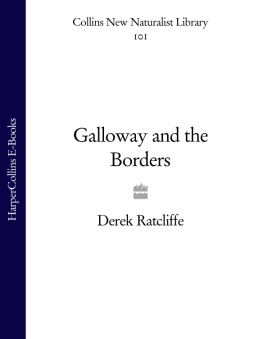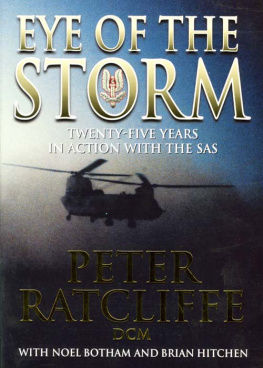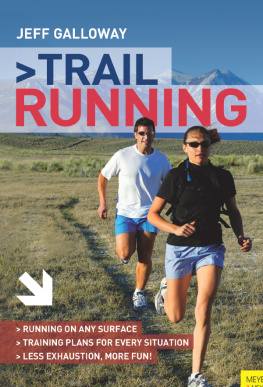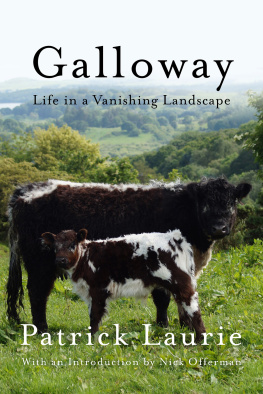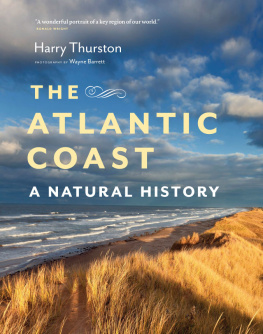SARAH A. CORBET, SCD
PROF. RICHARD WEST, SCD, FRS, FGS
DAVID STREETER, FIBIOL
JIM FLEGG, OBE, FIHORT
The aim of this series is to interest the general reader in the wildlife of Britain by recapturing the enquiring spirit of the old naturalists. The editors believe that the natural pride of the British public in the native flora and fauna, to which must be added concern for their conservation, is best fostered by maintaining a high standard of accuracy combined with clarity of exposition in presenting the results of modern scientific research.
To Jeannette
Good prose is like a window pane
George Orwell, Why I Write
D erek Ratcliffe had a photographic memory of most of Britain, and certainly of the uplands. Name a location, and he could describe the habitats, the intricacies of their ecology, and especially the birdlife. He was an acute observer, with an enthusiasm for wild, open areas combined with a natural curiosity and an ability to think laterally. His industry and energy were remarkable, driven by a thirst for knowledge, an urge to understand what was happening around him, and the ability to reveal to others with straightforward clarity the hidden wonders of the natural world.
Born in London on 9 July 1929, Derek grew up in Carlisle, where he developed a keen interest in nature. His first step on the literary ladder was a school essay on peregrines and ravens for which he won a prize at Carlisle Grammar. As he describes in the New Naturalist Lakeland: the wildlife of Cumbria (2002), his parents made the wonderful decision to move from London to Carlisle when I was nine years old, and so paved the way for the eventual appearance of this book. Indeed, that move was a blessing, for it has now also given us Galloway and the Borders, which is both a lament for the wealth of nature lost in our lifetimes and a celebration of one of Britains neglected landscapes. In addition to writing these two volumes for the series, Derek was an enthusiastic supporter of the New Naturalist library, and a series editor for twelve years.
During six decades, from his early encounters with wildlife through to difficult and strained relations with politicians and senior civil servants, Derek always wrote lucidly about nature. He was one of the most distinguished conservationists in Britain, featuring once in The Sunday Times as one of the hundred people who had most influenced the twentieth century. He retired in 1989 as Chief Scientist of the Nature Conservancy Council (NCC), but went on to write several more books and articles. His publications list is unique for the breadth of subjects in which he had expert knowledge. Derek devised the modern framework for nature conservation in A Nature Conservation Review (1977), which he edited and largely wrote. He made the key discovery about the link between pesticides and eggshell thinning in raptors, producing in 1967 a paper in the prestigious scientific journal Nature which became what is now known as a citation classic. Later, he published two classic bird monographs, The Peregrine Falcon (1980, 1993) and The Raven (1997), and a highly original book on Bird Life of Mountain and Upland (1990).
As a botanist, having taken his PhD on mountain vegetation at the University of Wales in Bangor, Derek went on to pioneer (with Donald McVean) the description and classification of upland vegetation in the Scottish Highlands, published in Plant Communities of the Scottish Highlands (1962). Later, he made pioneering studies of bryophytes, peatlands and mountain plants. He loved to write about his travels and experiences, and captured these first in Highland Flora (1977), later in his memoir of early years in the field, In Search of Nature (2000), and finally in the superbly illustrated book about his travels with his wife Jeannette in the far north of Europe, Lapland: a natural history (2005). Derek also wrote scientific papers, book chapters and articles which all had the hallmark of first-hand observation, clear analysis and fluent writing. Many of his photographs appear in his books, and even some of these have become conservation icons, such as the wave of conifers breaking over the uplands of Kirkcudbrightshire, Rannoch Moor with its pine stumps exposed, dotterel nesting on a Lakeland fell, and the great beeches of the New Forest.
He did not dress, speak or behave as if he was important. He was quiet sometimes virtually silent; he was shy and unassuming; thoughtful, intense, brave and constitutionally sceptical; and at times outraged, especially over forestry and farming impacts on nature and the land. Derek thought critically about the plight of nature, wrote about its place in society, and constantly urged people, especially his colleagues, to rise up in its defence. He never ceased to be upset by the destruction of wild places, and in his writing you can hear his voice.
With his penetrating knowledge and understanding, and personal commitment, he effectively led the NCC in the 1970s and 1980s, laying the foundations for the wildlife legislation and protected areas we have today. It was an unorthodox style of leadership, founded on a first-hand understanding of the changing landscape, a capacity to analyse complex issues, an awareness of the political process, and the courage of his convictions.
In the field he was special company, and at his happiest. He rarely worked outdoors alone, instead enjoying company. There was a rhythm to his presence in the wilds, with which he always seemed so perfectly in tune. Of the many tributes to Derek written after his sudden death on 23 May 2005, few mentioned one of his sterling qualities his capacity for friendship. He was not gregarious, and his many friendships were sustained by an immense capacity for letter writing, which he kept up throughout his life, and above all by comradeship in the field. Derek trusted his colleagues and friends, and this was returned in huge measure; he did not have much faith in humanity, but he did in his friends.
Derek inspired people; he breathed new life into them through his words, his photographs, his conduct, his humility and his own idiosyncratic, understated greatness.
Des Thompson
T HE SOUTH OF Scotland has always suffered by comparison with the grander Highlands, and in natural history has been something of a Cinderella, relatively unknown and written about by a very few students of plants and animals. Galloway, in particular, comprising the twin counties of Kirkcudbright and Wigtown the Stewartry and the Shire has neither a full-blown flora nor a fauna to its publications credit, and the counties of Selkirk, Roxburgh, Peebles, West Lothian and East Lothian have little of recent literature. Yet this is a region rich in diversity of wildlife, with a range of habitat that spans nearly all the main types to be found in Britain. Parts of it still have the allure of the unknown, and there is still much basic recording to be done on the less popular groups of plants and animals.
I grew up only a short distance south of the Scottish border, and soon began to make forays in search of birds across it into neighbouring Dumfriesshire. Then I discovered the charms of Galloway, where from 1946 onwards I spent annual spring holidays exploring its hill country for peregrines and ravens, staying with shepherds and their families in out-of-the-way places. From 1956 to 1963, my first job with the Nature Conservancy was based in Edinburgh, and my work often took me south into the Borders and Galloway. Even though I have subsequently lived far away, there has not been a single year when I have failed to visit the region at least once.
This book is based especially on my own field experience, but supplemented by the observations and information of many others, from both personal contact and perusal of the literature. I have to thank first Donald and Joan Watson, warm friends for over forty years, whom I visited often in their charming home in Dalry, for their kindness and hospitality. Donald and I had many good days together in the field, looking for birds, and I learned much from his encyclopaedic knowledge of the Galloway scene and his artists eye for it. His passion for the hen harrier was inspiring and his fieldcraft in finding their nests something to behold. Donalds books,

